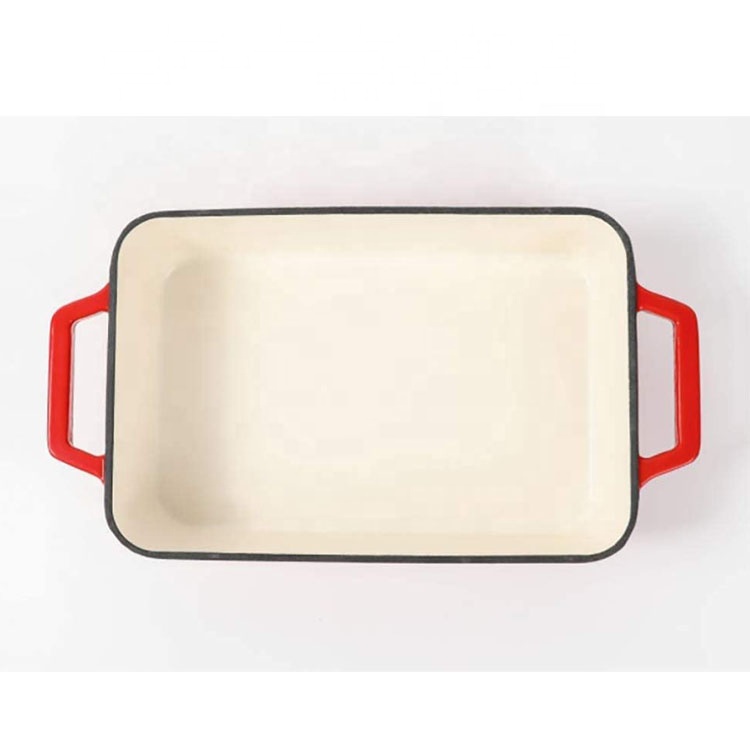
cast iron ribbed skillet pan
The Timeless Appeal of Cast Iron Ribbed Skillet Pans
Cast iron cookware has long held a cherished place in kitchens around the world, and among its various forms, the cast iron ribbed skillet pan stands out for both its functionality and culinary versatility. These pans, characterized by their distinctive ribbed surface and robust construction, not only enhance cooking experiences but also evoke a sense of nostalgia, connecting generations through the art of cooking.
The Structure and Benefits of Ribbed Skillets
The ribbed design of these skillets serves multiple purposes. Primarily, the ridges create distinct grill marks on meats and vegetables, enhancing presentation and flavor through better searing. This feature is particularly beneficial for cooking foods like steaks, fish, and vegetables, which require a crisp exterior coupled with moisture retention. The elevated surface allows grease and fats to drain away, resulting in healthier cooking options without compromising taste.
Beyond aesthetics and cooking quality, cast iron ribbed skillets are renowned for their exceptional heat retention and distribution. When properly seasoned, these pans maintain a consistent cooking temperature, which is essential for achieving a perfect sear. This attribute makes them ideal for both stovetop and oven use, allowing culinary enthusiasts to start a dish on the burner and finish it in the oven without needing to switch cookware.
The Art of Seasoning and Care
One of the unique aspects of cast iron cookware, including ribbed skillets, is the necessity of seasoning. This process involves applying a thin layer of oil and baking the pan to create a naturally non-stick surface. Over time, regular use and seasoning build a beautiful, dark patina that enhances the pan's performance while making it increasingly resistant to rust and sticking.
cast iron ribbed skillet pan

Caring for a cast iron ribbed skillet is a straightforward process but requires dedication. After use, it should be cleaned with hot water, and soap should be used sparingly. Storing the skillet in a dry place, sometimes with a paper towel between layers if stacked, helps maintain its condition. Such care not only extends the life of the pan but also enriches its non-stick properties, making it even more enjoyable to use.
Culinary Versatility
The versatility of cast iron ribbed skillets is one of their greatest appeals. They are equally effective for frying, baking, roasting, or grilling. Breakfast favorites like pancakes and eggs sit beautifully next to seared steaks or roasted veggies for dinner. The ribbed skillet can even handle cornbread, which develops a delightful crispy bottom through the cast iron’s extraordinary heat conduction.
For those who enjoy outdoor cooking, these skillets are perfect companions for camping trips, allowing you to grill over an open fire while enjoying the rustic charm of nature. The ability to transfer from stovetop to campfire is a testament to the durability of cast iron cookware, making it a favored choice for many outdoor enthusiasts.
Conclusion
In a world filled with non-stick, synthetic options, the cast iron ribbed skillet pan offers an enduring charm and unparalleled cooking performance that few can match. Its ability to sear, retain heat, and add flavor reflects the time-tested nature of cast iron cookware. Whether you are a seasoned chef or a novice cook, embracing a cast iron ribbed skillet can elevate your culinary experience, bringing both tradition and creativity to your kitchen. Investing in such a pan means investing in a piece of culinary legacy that can be passed down through generations, making every meal a celebration of family and heritage.
-
Season Cast Iron Perfectly with GPT-4 Turbo TipsNewsAug.01,2025
-
High Quality Cast Iron Cookware - Baixiang County Zhongda MachineryNewsAug.01,2025
-
Premium Cast Iron Pan: Durable & Perfect HeatNewsAug.01,2025
-
High Quality Kitchen Durable Black Round Cast Iron Cookware Pancake Crepe Pan-Baixiang County Zhongda Machinery Manufacturing Co., Ltd.NewsAug.01,2025
-
Cast Iron Cookware - Baixiang County Zhongda Machinery | Nonstick, Heat ResistanceNewsAug.01,2025
-
High Quality Kitchen Durable Black Round Cast Iron Cookware - Baixiang County Zhongda Machinery | Non-Stick, Heat Retention, DurableNewsJul.31,2025


